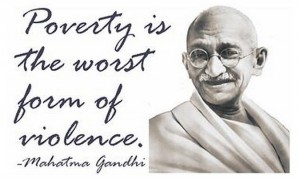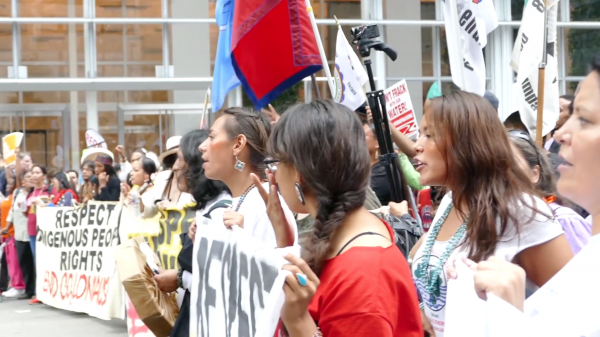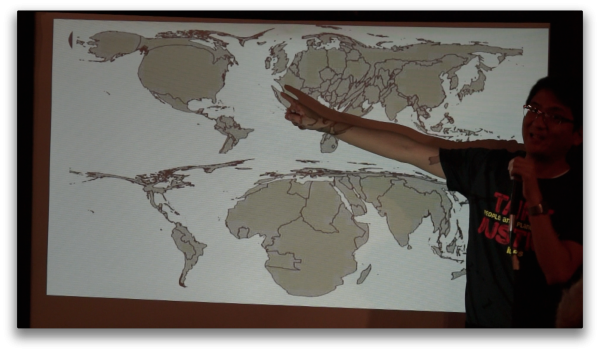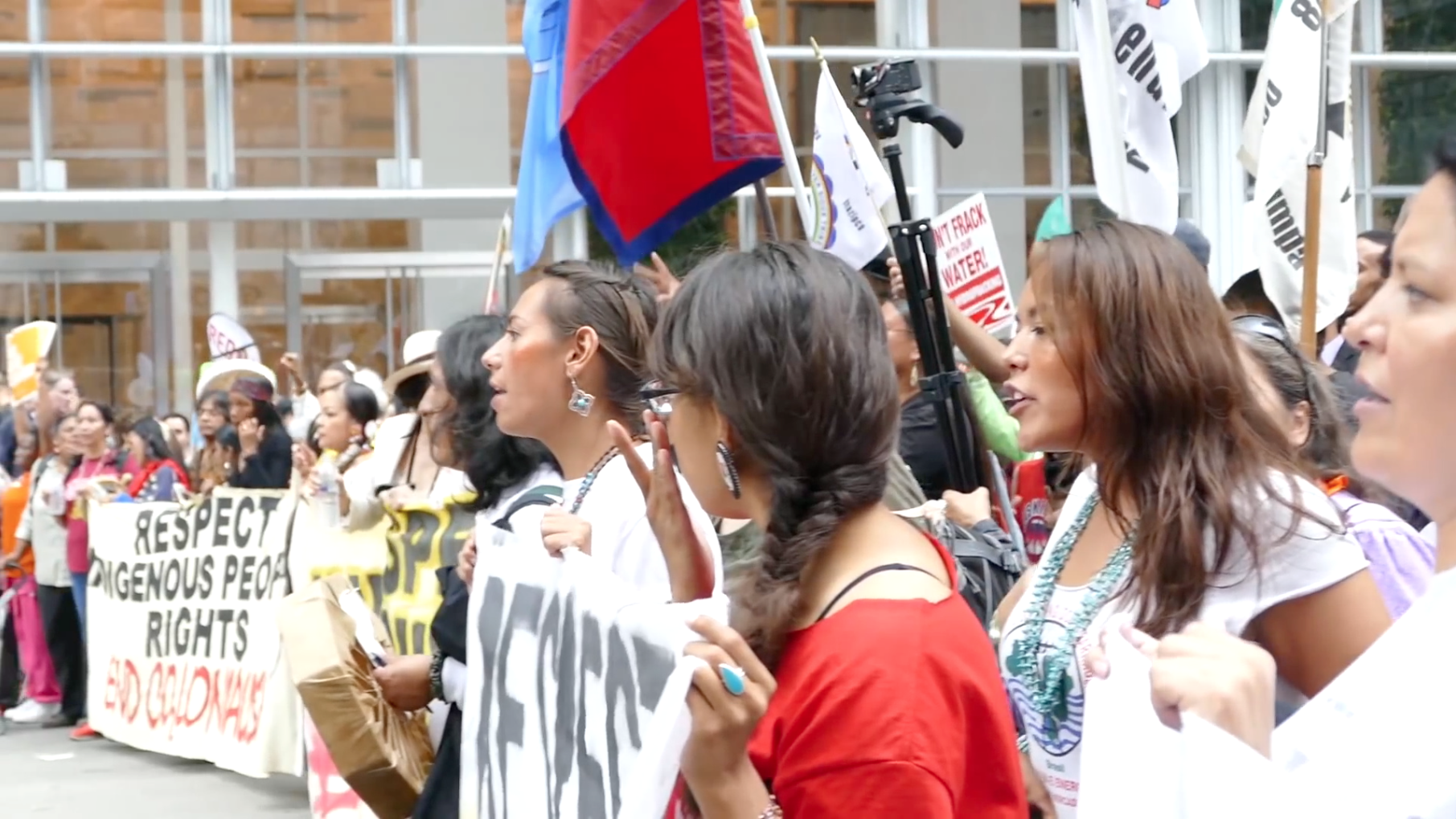Last Tuesday, Fossil Free Rhode Island screened an early version of Robert Malin’s documentary People’s Climate March News You Didn’t See. While there is a lot to be said about this breathtaking documentary and the discussion that followed, this post is more limited in scope and continues the Capitalism = Climate Chaos theme.
The documentary features an interview with Senator Sheldon Whitehouse, who made the following comments about the wind farm to be built off Block Island:
We’re doing our part in terms of carbon reduction. […] I’m particularly excited by the off-shore wind work that we are doing. Rhode Island has set an example for the rest of the country in terms of how you site an off-shore wind turbine and for the first time we’ll be generating significant amounts of domestic, Rhode Island clean power. So, it’s exciting.
Excitement! I love it, but at such moments my scientist’s instincts issue a red alert: “Where are the numbers?” That brings me to David MacKay’s book Sustainable Energy — without the hot air, and in particular to its first part Numbers, not adjectives. So, let’s see how the just-quoted adjective “significant” does in terms if numbers. First, we need a little physics: a unit to measure power, the rate of energy production or consumption. I’ll borrow the unit that MacKay uses because, as he says, it fits the “human experience.” This unit of power is the kilowatt hour per day. It is roughly what a single human worker can produce. It is also close to the power used by an old-fashioned, 40 watt incandescent light bulb. Just look at your monthly electricity bill, divide the total amount of energy consumed in units of kilo watt hours by the number of days in the month, and there you have your average power consumption in kilo watt hours per day.
Now, let’s figure out what the planned Block Island wind farm produces for the average Rhode Islander. It is nominally rated at 30 mega watt. That is on the “nameplate,” but we have to take into account the capacity factor, the fraction of the nameplate value that is actually generated after down-time and less-than-perfect wind conditions take their toll. Capacity factors vary, but typically they are in the 25%-50% range. Let’s be optimistic and go with 50%, which means that we can count on an average of 15 mega watt. Spread that out over the people of Rhode Island and you get about 0.35 kilo watt hour per day per capita.
At this point a light bulb should go on in your head: “That wind farm will light up what? One third of a light bulb?” Please, arithmophobes, bear with me; we need just one more number. Go to this web site of the U.S. Energy Information Administration, and look up the total power consumed by the average Rhode Islander on electric power, transportation, home heating, etc. The total —only one third accounts for electricity— turns out to be 140 kilo watt hour per day per capita. Just pause to realize that this is the equivalent of having 140 people working for every single one of us, 24-7. Once you grasp that the fossil fuel industry is renting out a “140 person work force” to each one of us, you understand why fossil fuel money is one of the major sources of corruption of our supposedly democratic system.
Putting all the numbers together, we find that the Block Island wind farm will account for a one quarter of one percent of the “power experience” of the average Rhode Islander. We, scientists with our admittedly poor appreciation of politician’s reality, do not call 0.25% a significant amount. Unfortunately, without these sorts of rhetorical flourishes one does not get elected to public office. Indeed, last June I spoke to Congressman Jim Langevin’s aid dealing with environmental issues. After I had expressed my concern about the woeful inadequacy of our national greenhouse gas emission reduction “plan,” she gave me the same spiel about the great leap forward planned off Block Island. Yeah, one quarter of a percent, here we come!
During that same conversation I was shocked to hear the congressman’s aid say that I was the first constituent who expressed concern about methane, the bridge fuel to nowhere and linchpin of our national climate plan. As I have said in public before, our congressional delegation’s words are disconnected from its actions. As always, specious rhetoric reveals how the system works for its corporate masters. Sadly, “the best lack all conviction” and shine merely for want of competition.
Hot air may obscure but it cannot change that we are not doing our part for carbon reduction. Globally, we have to reduce greenhouse gasses by 6% per year as of the beginning of 2014, almost a year ago. That percentage that will increase rapidly every year we continue business as usual, but once again in 2013, the greenhouse gas emissions increased by 2.5%, extending an age-old trend. Our current trajectory will hit the cold-turkey limit of 100% instantaneous reduction in 2027. Only those who live in fool’s paradise see a one-time planned emission reduction by 0.25% as “doing our part.”
 A minor dose of elementary science may reveal that we’re being fooled, but it cannot teach us values and priorities. The real issue is sustainable development as defined by the Brundtland Commission Report in 1987:
A minor dose of elementary science may reveal that we’re being fooled, but it cannot teach us values and priorities. The real issue is sustainable development as defined by the Brundtland Commission Report in 1987:
Sustainable development is development that meets the needs of the present without compromising the ability of future generations to meet their own needs.
This statement acquires meaning once one define “needs.” The commission did that in stating that overriding priority should be given to the needs of the world’s poor. It also mentioned limitations imposed by technology, social organization, and the environment, but failed to conclude that sustainable development is incompatible with capitalism, as is clearly shown by the 180 degrees that separate our system’s walk from its talk.
Most of all, those who live on the front lines of climate change know that the U.S. is continuing business as usual. News You Didn’t See brought word that the tide is turning and that there is real movement in the streets, but let me quote what Melina Laboucan-Massimo, environmental activist and one of the indigenous women who had come from Canada, had to say:
Resource extraction and exploitation of our lands is so easy because they go hand in hand. Violence against the Earth begets violence against women, and if we don’t deal with both of them, we are not ever going to resolve the issue of the colonial manners and the colonial mentality, and the values of patriarchy and the values of capitalism that essentially exploit the land and exploit our women.

We, the privileged people of the industrialized world, are carbon debtors; we have vastly overspent our fair share of humanity’s carbon budget. Rather than continuing business as usual under the false flag of doing our part, we should be offering reparations, stimulating green power, opening borders to people rather than corporations, forgiving debts and doing away with patents. We should be working seriously on removing greenhouse gasses from the atmosphere. Our current path with its free-trade agreements, denial and deceit moves us in the wrong direction; it will not address poverty nor will it restore even a semblance of morality.

This snapshot from News You Didn’t See shows Paul Quintos as he contrasts the distorted views of the world as seen from the perspective of those who benefit (top) and those who suffer from the disruption (bottom) brought on by fossil fuels.
News You didn’t See paints a picture of hope for the future and resonates with how Noami Klein, in her This Changes Everything: Capitalism vs. The Climate, sees the work that lies ahead:
Fundamentally, the task is to articulate not just an alternative set of policy proposals but an alternative worldview to rival the one at the heart of the ecological crisis— embedded in interdependence rather than hyper-individualism, reciprocity rather than dominance, and cooperation rather than hierarchy. This is required not only to create a political context to dramatically lower emissions , but also to help us cope with the disasters we can no longer to avoid. Because in the hot and stormy future we have already made inevitable through our past emissions, an unshakable belief in the equal rights of all people and a capacity for deep compassion will be the only things standing between civilization and barbarism.
This new mode of thinking will not come from our “elected” cheer leaders with their Madison Avenue sound bites. Yes, we have the problem stated by James Lovelock in the quote at the beginning of David MacKay’s book:
We live at a time when emotions and feelings count more than truth, and there is a vast ignorance of science.
But that is only a minor part of the problem; Evo Morales summed up what is at its core:
If we want to save the planet Earth, to save life and humanity, we have a duty to put an end to the capitalist system.
More later on how this will be done by means of
Green Power to the People!





